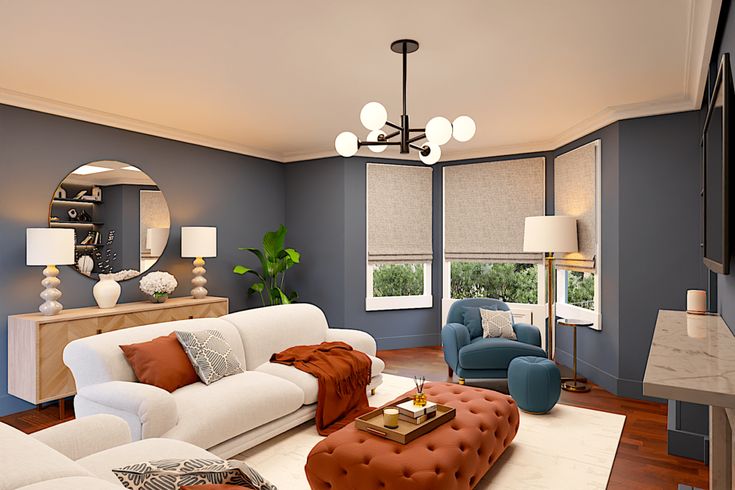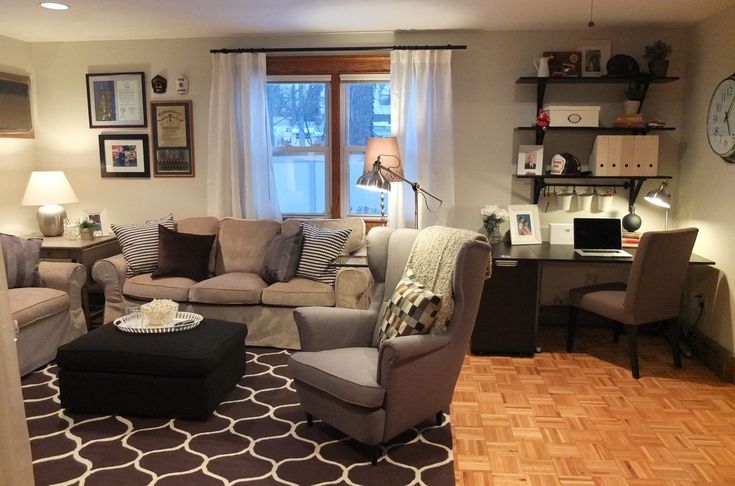Living Room Layout Mistakes and How to Avoid Them
Living Room Layout Mistakes and How to Avoid Them – Designing a living room might seem straightforward, but it’s surprisingly easy to make mistakes that can affect its functionality and overall aesthetic. A well-designed living room is not just beautiful but also practical and comfortable. To help you create a space that works perfectly for your needs, we’ve compiled a guide on common living room layout mistakes and how to avoid them.
1. Ignoring the Functionality of the Room
One of the biggest mistakes people make is designing their living room without considering how they plan to use the space. Whether it’s for entertaining guests, family relaxation, or a mix of both, the purpose of the room should guide its layout.
How to Avoid:
- Make a list of the primary activities that will take place in the room.
- Choose furniture and accessories that support those activities.
- Ensure there’s enough seating, storage, and open space for your needs.
2. Choosing the Wrong Furniture Size
Oversized or undersized furniture can make your living room feel cramped or awkwardly sparse. Furniture that doesn’t suit the scale of the room disrupts both flow and aesthetics.
How to Avoid:
- Measure your space before purchasing furniture.
- Use tools or apps to visualize how furniture will fit into your room.
- Opt for multi-functional pieces in smaller spaces, such as ottomans with storage or foldable coffee tables.
3. Poor Traffic Flow
A living room that’s difficult to navigate due to misplaced furniture or clutter is a common issue. Blocked pathways can make the room feel crowded and uninviting.
How to Avoid:
- Ensure there’s at least 3 feet of space for main pathways.
- Arrange furniture to create clear and intuitive walkways.
- Keep the area near doorways free from obstructions.
4. Pushing All Furniture Against the Walls
While it may seem like a logical way to maximize space, lining all your furniture against the walls can make your living room feel cold and impersonal.
How to Avoid:
- Float furniture away from the walls to create cozy seating arrangements.
- Use rugs to define zones within the room.
- Incorporate a focal point, such as a fireplace or a coffee table, to anchor the layout.
5. Neglecting Lighting Layers
Relying on a single overhead light can make your living room look flat and uninviting. Proper lighting is crucial for setting the mood and highlighting the design elements of the space.
How to Avoid:
- Incorporate three types of lighting: ambient, task, and accent.
- Use floor lamps, table lamps, and wall sconces to complement overhead lighting.
- Dimmer switches allow you to adjust brightness based on the time of day or activity.
6. Skipping a Focal Point
Without a focal point, a living room can feel chaotic and lack cohesion. A focal point serves as the centerpiece of the room, guiding the layout and design choices.
How to Avoid:
- Identify a natural focal point, such as a fireplace, large window, or TV.
- Arrange furniture to draw attention to the focal point.
- Enhance the focal point with decor, such as artwork, a mirror, or lighting.
7. Overcrowding the Space
Too much furniture or decor can make your living room feel cluttered and uncomfortable. It’s important to strike a balance between functionality and open space.
How to Avoid:
- Prioritize essential pieces and remove unnecessary items.
- Choose furniture with sleek designs to create a sense of openness.
- Regularly declutter to maintain a clean and organized look.
8. Forgetting About Storage
A lack of storage can lead to clutter, making your living room feel disorganized and chaotic. This is especially problematic in small spaces.
How to Avoid:
- Invest in furniture with built-in storage, such as storage ottomans or bookshelves.
- Use decorative baskets and bins to store smaller items.
- Incorporate vertical storage solutions, such as tall cabinets or floating shelves.
9. Ignoring the Proportions of Rugs
A rug that’s too small can make your living room feel disjointed, while an oversized rug may overpower the space. Rugs play a key role in tying the room together.
How to Avoid:
- Choose a rug large enough to fit under all the front legs of your furniture.
- In a seating area, ensure the rug extends at least 6-12 inches beyond the edges of the furniture.
- Use rugs to define different zones in open-plan spaces.
10. Neglecting Wall Space
Bare walls can make a room feel incomplete, while overly cluttered walls can feel chaotic. Striking the right balance is key to creating an inviting atmosphere.
How to Avoid:
- Decorate walls with a mix of artwork, mirrors, or shelves.
- Use large-scale art or gallery walls to make a statement.
- Incorporate wall-mounted lighting or plants to add dimension.
11. Ignoring Personal Style
Copying a design from a magazine or showroom without considering your personal preferences can result in a living room that feels impersonal and unwelcoming.
How to Avoid:
- Incorporate elements that reflect your personality, such as family photos, travel souvenirs, or heirloom pieces.
- Mix and match styles to create a unique look.
- Use colors, patterns, and textures that resonate with you.
12. Overlooking Window Treatments
Neglecting your windows can make your living room look unfinished. The right window treatments can enhance privacy, control light, and add a touch of elegance.
How to Avoid:
- Choose curtains, blinds, or shades that complement your overall design.
- Hang curtains higher and wider than the window frame to create the illusion of larger windows.
- Layer window treatments for added functionality and style.
13. Misplacing the Television
Positioning the TV awkwardly can disrupt the room’s flow and make viewing uncomfortable. This is especially problematic in rooms where the TV is the focal point.
How to Avoid:
- Place the TV at eye level for comfortable viewing.
- Avoid placing the TV in direct sunlight or where glare might be an issue.
- Consider a TV mount or entertainment center that integrates seamlessly with your decor.
14. Failing to Create Conversation Areas
A living room that doesn’t facilitate conversation can feel disjointed and uninviting. Proper furniture arrangement encourages interaction and socializing.
How to Avoid:
- Arrange seating in a circular or semi-circular layout.
- Keep chairs and sofas close enough to allow easy conversation.
- Incorporate a coffee table or ottoman as a central gathering point.
15. Overcomplicating the Design
Overloading your living room with too many patterns, colors, or decor styles can create a chaotic and overwhelming space.
How to Avoid:
- Stick to a cohesive color palette and design theme.
- Use patterns and bold colors sparingly as accents.
- Regularly edit your decor to maintain a clean and balanced look.
By avoiding these common living room layout mistakes, you can create a space that’s not only visually appealing but also functional and welcoming. Take the time to plan your layout, consider your needs, and incorporate your personal style to design the perfect living room for you and your family.






